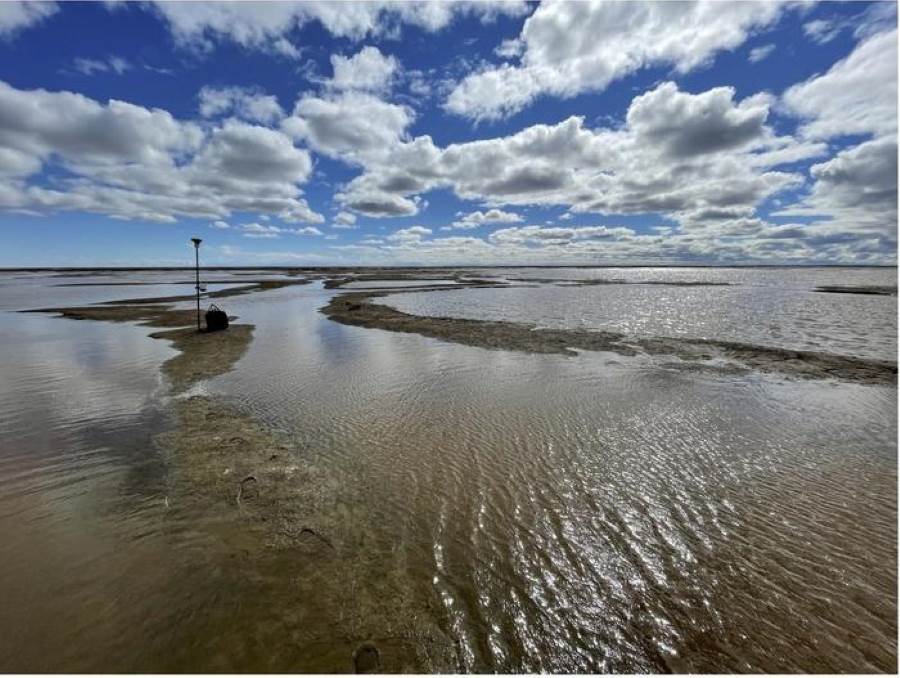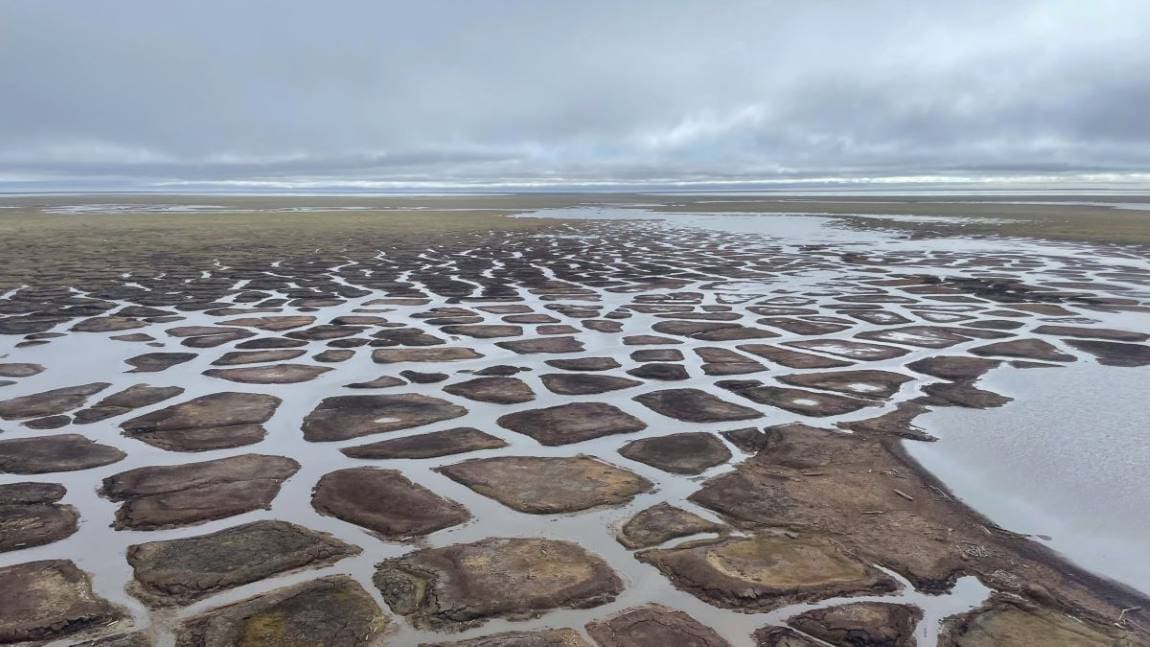Coastal retreat in Alaska is advancing at an unprecedented rate due to the overlapping effects of multiple climate hazards, including sea level rise, permafrost thaw subsidence, and erosion.
A recent study, published in Proceedings of the National Academy of Sciences, highlights the compounding impact of these processes on the Arctic Coastal Plain (ACP) of Alaska, an expansive and low-lying landscape particularly vulnerable to climate change.
The Alaska’s Arctic Coastal Plain spans over 60,000 square kilometers and is characterized by ice-rich permafrost. This region is experiencing some of the highest rates of sea level rise and coastal erosion in the Arctic. While the threat of coastal erosion has been well-documented over 75 years of aerial and satellite observations, less attention has been given to how sea level rise and permafrost thaw subsidence compound its effects. This gap has hindered comprehensive assessments of these hazards in isolation and combination.
“Our findings highlight the risks that compounding climate hazards pose to coastal communities and underscore the need for adaptive planning for Arctic communities within zones of 21st-century land loss,” the study notes. The research provides critical insights into how the cumulative impact of these processes is reshaping the Arctic landscape.
“Compound climate impacts accelerate coastal change,” explained Roger Creel, lead author and postdoctoral scholar in the Woods Hole Oceanographic Institution’s (WHOI) Department of Physical Oceanography. “There is this nonlinear acceleration in coastal impacts that we should be expecting will happen in places like Northern Alaska.”

Co-author Benjamin Jones, research associate professor at the Institute of Northern Engineering at the University of Alaska Fairbanks, emphasized the scale of transformation underway. “The findings from this study reveal an unprecedented transformation of Alaska’s Arctic coastlines. By 2100, the combined effects of coastal erosion, sea level rise, and permafrost thaw subsidence will likely push the North Slope shoreline inland to a location it hasn’t reached since the last interglacial period over 100,000 years ago,” he said. “These findings represent a paradigm shift in the 21st Century Arctic, highlighting the urgent need for adaptive strategies to protect vulnerable communities and infrastructure in the face of these cumulative climate hazards.”
The study employed cutting-edge methods, including 5-meter topography, satellite-derived coastal lake depth estimates, and empirical assessments of land subsidence due to permafrost thaw. Researchers also incorporated projections of coastal erosion and sea level rise for medium and high emission scenarios based on the IPCC’s 6th Assessment Report. The results revealed that by 2100, total land loss could surpass erosion-related losses by as much as eightfold.
“This research highlights the value of working across disciplinary boundaries for more robust projections of coastal Arctic evolution in the coming century,” noted Julia Guimond, co-author and assistant scientist in WHOI’s Applied Ocean Physics and Engineering Department. “Our work shows that by 2100, total land loss will exceed erosional losses by up to eight times. Here we focus on processes affecting Alaska’s Arctic Coastal Plain, but a key takeaway is the compounding effects of multiple hazards and that applies to coastal resilience planning across the globe.”
Permafrost thaw subsidence, which is causing the land surface to fall faster than sea levels are rising, is expected to dominate Arctic coastal change over the long term. “Along ice-rich permafrost coastlines, the land surface is falling faster than the sea levels are rising. Over the coming decades, permafrost thaw subsidence will move the coastline farther inland than coastal erosion or sea level rise alone will move it,” explained Pier Paul Overduin, co-author and senior scientist at the Alfred Wegener Institute Helmholtz Centre for Polar and Marine Research in Germany.
The research has broader implications for planning and policy.
Creel noted that while residents of northern Alaska are familiar with the impacts of permafrost thaw subsidence, it has been largely overlooked by resource-allocating agencies such as the U.S. Army Corps of Engineers and FEMA. “These sorts of bodies with a lot of resources may have not been paying enough attention to permafrost thaw subsidence as an agent of coastal change. This study is a wake-up call to expand the conversation,” he said.
The implications for Arctic communities are profound. An Arctic shoreline governed by inundation, as described in the study, will bring unprecedented challenges to local populations. Communities are at risk of losing infrastructure, hunting grounds, subsistence access routes, cultural heritage sites, and even the soil beneath their feet. The study emphasizes the need for future research to prioritize the needs of these vulnerable populations.
***
Funding for this study was provided by a Woods Hole Oceanographic Institution Postdoctoral Scholarship and the President’s Innovation Fund, U.S. National Science Foundation grants, and the Deutsche Forschungsgemeinschaft under Germany‘s Excellence Strategy, with additional support provided under a Broad Agency Announcement award from the U.S. Army Corps of Engineers’ Engineer Research and Development Center – Cold Regions Research and Engineering Laboratory.
Journal Reference:
R. Creel, J. Guimond, B.M. Jones, D.M. Nielsen, E. Bristol, C.E. Tweedie, P.P. Overduin, ‘Permafrost thaw subsidence, sea-level rise, and erosion are transforming Alaska’s Arctic coastal zone’, Proceedings of the National Academy of Sciences 121 (50) e2409411121 (2024). DOI: 10.1073/pnas.2409411121
Article Source:
Press Release/Material by Woods Hole Oceanographic Institution
Featured image: Marine flooding degrades permafrost near Point Lonely, Alaska. As compound climate impacts accelerate coastal change, there is an urgent need for adaptive strategies to protect vulnerable communities and infrastructure. Credit: Benjamin M. Jones | Institute of Northern Engineering, University of Alaska Fairbanks




